Inbox and Environment News: Issue 355
April 8 - 14, 2018: Issue 355
PITTWATER YHA OFFERS FREE BEDS FOR GREEN HEARTS
Pittwater YHA opens its doors to green-hearted and green-thumbed guests who'll save the gorgeous Ku-ring-gai Chase National Park from imminent asparagus fern invasion. Yes, seriously.
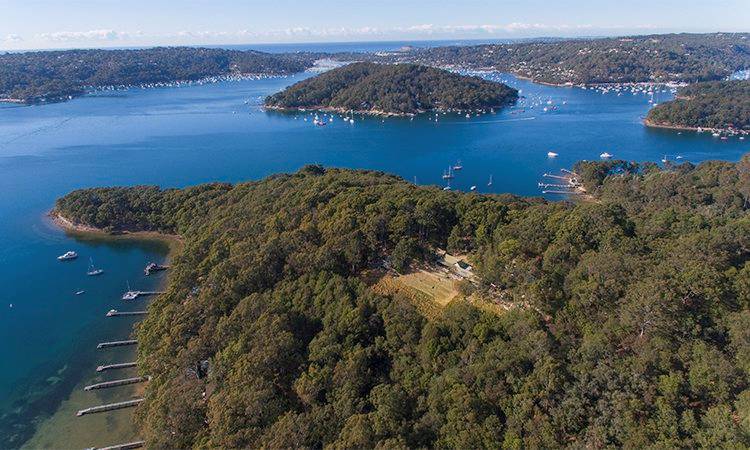
WHAT IS IT?
Bush Regeneration sees eco-conscious, kind hearted humans restore and rehabilitate the gorgeous, sprawling Aussie bush from its weed-infested, degraded state into a healthy, thriving plant community, which will prosper and delight forevermore. Far from just weed removal; Regenerators focus on habitat, drainage, weed sources and establishing native communities. These are big words which probably don’t make much sense – but we have an interactive learning opportunity for you!
WHERE IS IT?
Ku-ring-gai Chase National Park, Sydney’s protected north coast, is home to rock engravings, red ochre rock paintings, the fuzziest wildlife you ever did see and the most breathtaking views a Sydneysider or visitor could comprehend; and is currently under threat from invasive asparagus fern; which needs removing. Who knew your Auntie’s fave veggie could be so aggressive?
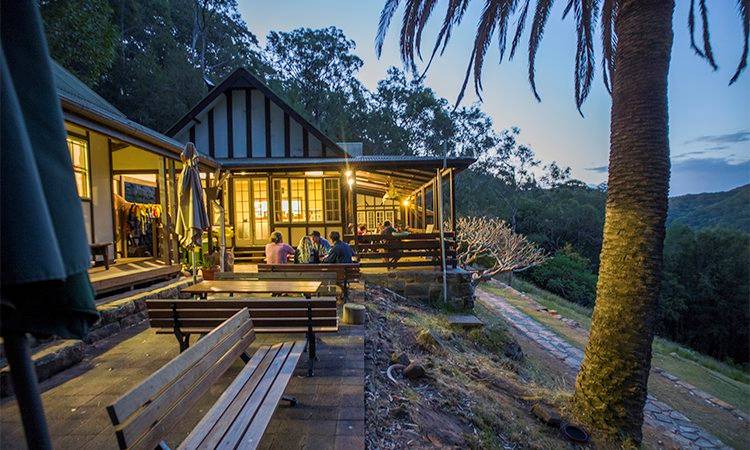
ALRIGHT - SIGN ME UP!
The blissed-out, babbling-brooked, spectacular-viewed, fresh-aired oasis that is our Pittwater YHA, alongside the Northern Beaches Council, are offering you fine green-thumbed and hearted folk the opportunity to volunteer alongside professional Regenerators for a weekend of Pittwater Restoration from May 11 – 13, 2018. Spend two mornings of tending to the gorgeous surrounds and you’ll be rewarded with two nights’ accommodation, two days of meals (morning teas, BBQ lunches and evening dinners) and kayak use throughout your stay. Plus, you’ll be chuffed with yourself for doing your bit for the planet and our futures.
Along with your towels, two sheets, a pillowcase and, sturdy shoes, sunscreen and your breakfasts; you’ll need a $20 contribution for the weekend. For all the T&Cs; head to Pittwater YHA, shoot them an email or give them a ring on (02 9999-5748) – the only thing those guys love more than a regenerated bushland is chatting to ladies and gentleman who are keen on the idea!
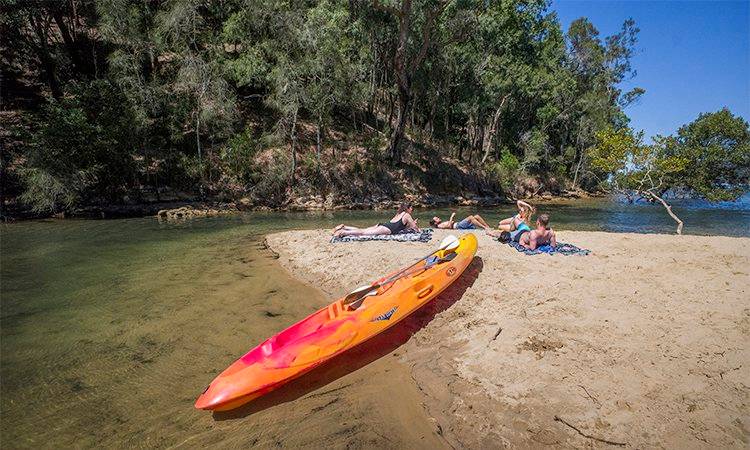
Broken Bay Pearls: World’s Finest Pearls Thriving In NSW
Scientific Paper Written About Broken Bay Cultured Pearls
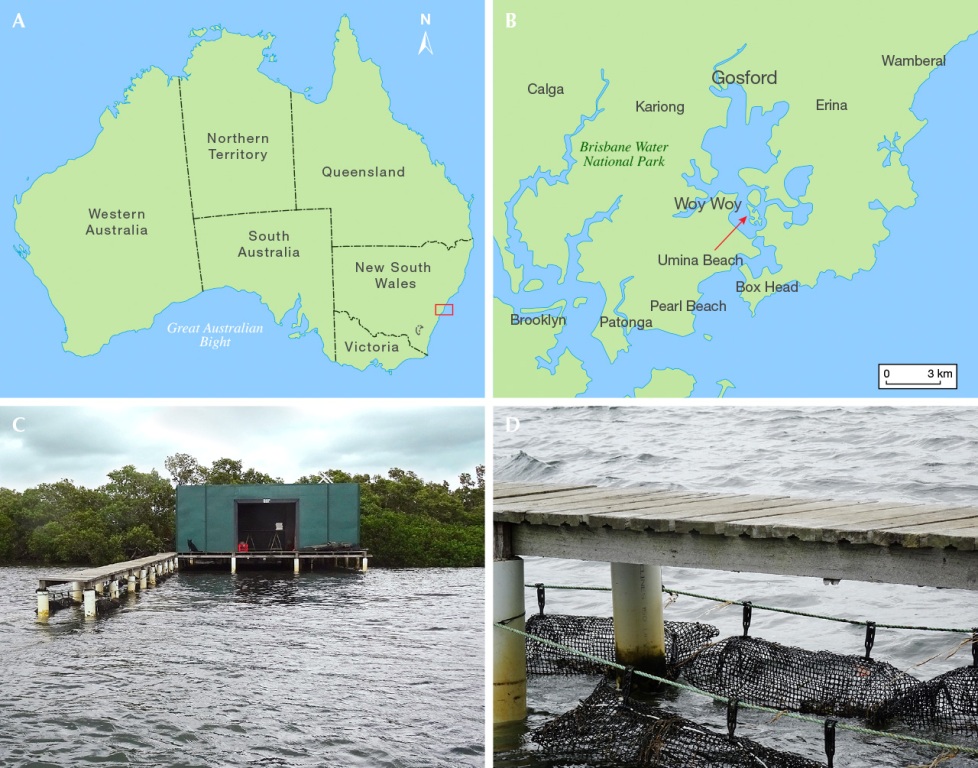
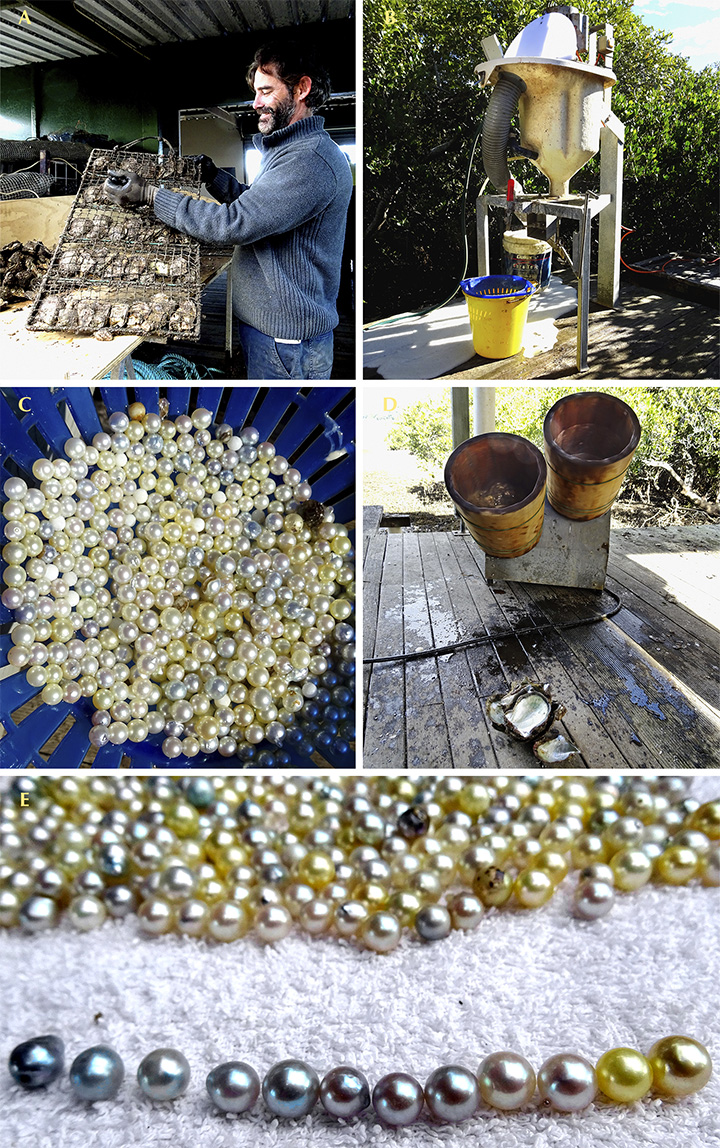
Powerful Owl Release
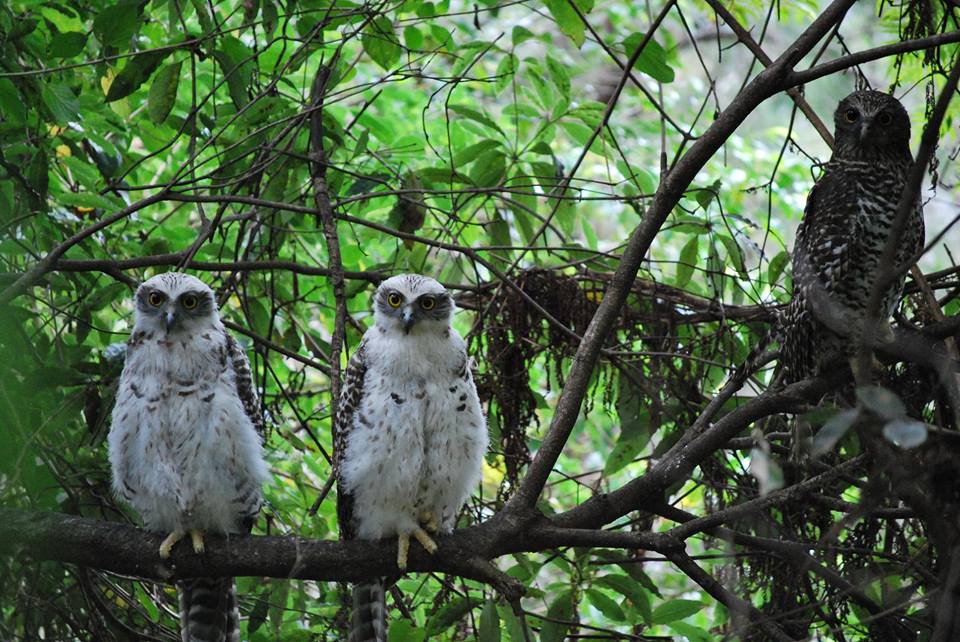
Australian Vine Can Boost Soybean Yield
Banking On Sunshine: World Added Far More Solar Than Fossil Fuel Power Generating Capacity In 2017
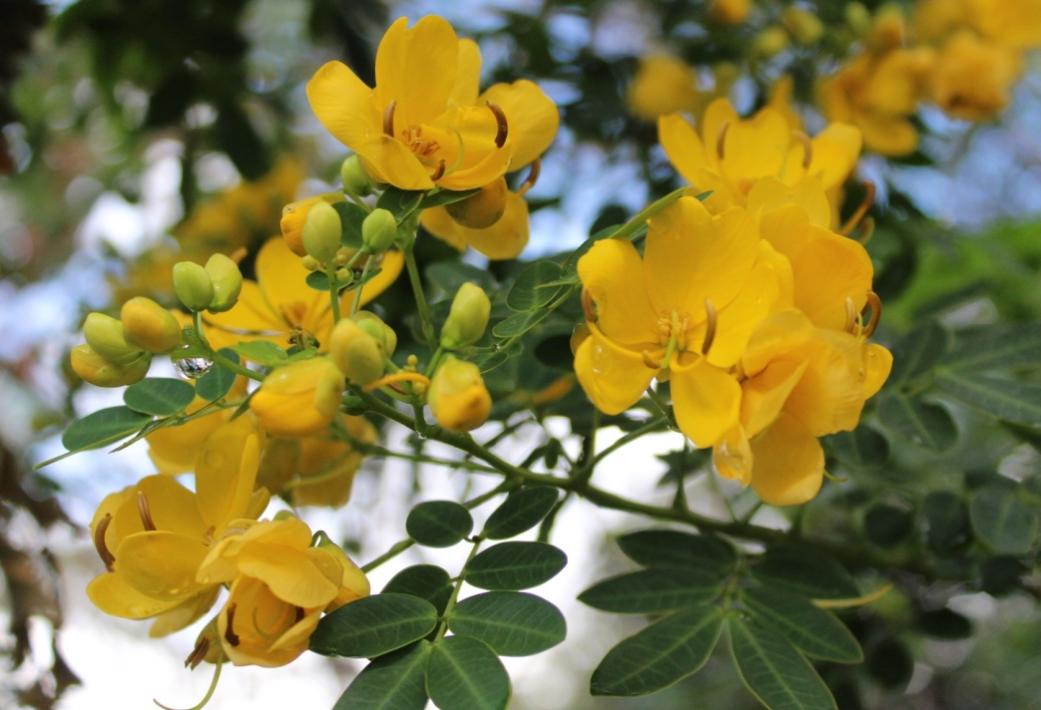
Councils Encouraged To Apply For Funds As New NSW Coastal Legislation Commences
April 3, 2018: NSW Office of Environment & HeritageNSW Environment Minister Gabrielle Upton and Planning Minister Anthony Roberts have welcomed the commencement of the NSWCoastal Management Act.
The NSW Government worked with councils to deliver the new legislative and regulatory framework to support the coordinated planning and management of the State's coastal areas.
Minister for the Environment Gabrielle Upton said councils are being encouraged to take full advantage of the significant $83.6 million funding package available to support councils to implement the reforms.
"The introduction of the Act is another step towards a modern and integrated way of managing our exceptional coastal areas, to benefit our coastal communities and the whole of NSW," Ms Upton said.
"The new Coastal Management Manual is a key part of the reforms. It provides a step-by-step guidance to coastal councils for preparing coastal management programs with their communities."
Minister for Planning Anthony Roberts said the reform package sets out clear outcomes for our coastal areas that councils would apply to make better decisions for the benefit of our coastal communities, environments and economy.
"The new Act and state environmental planning policy are now more integrated and long-term focused and will improve the quality of on-ground actions and development in coastal areas," Mr Roberts said.
"Councils will be equipped to approach the coastal issues most important to their local communities using the best available science and strategic planning tools.
"Our new state environmental planning policy gives detailed guidance on planning considerations for our most valued and sensitive coastal assets. We also have detailed, interactive mapping that is far more user-friendly and supports better planning decisions."
Ms Upton said that the Act includes transitional provisions that allow councils to move towards the new arrangements over time.
"Many councils have already undertaken a significant amount of work to prepare coastal zone management plans under the current laws, and they will not be expected to start over," Ms Upton said.
"Councils that already have certified plans in place, or that have submitted plans for certification, will have until 2021 to update to a coastal management program.
The Office of Environment and Heritage and the Department of Planning will continue to support councils through this process with grant funding, operational guidance and expert technical advice.
Wind Farm Approved For The Upper Hunter
April 4, 2018: NSW GovernmentThe NSW Government has approved a wind farm that will deliver 800 new jobs to the Upper Hunter region.
The $642 million Liverpool Range Wind Farm will generate enough to power nearly 500,000 homes.
Situated east of Coolah and northwest of Cassilis, the development will feature 272 turbines and four substations.
It will take three years to build the wind farm that will span 36km from north to south and 20km east to west. Once complete, it will be one of the largest wind farms in Australia.
Minister for Planning and Housing Anthony Roberts said the State Significant Development would pour large amounts of money back into the Upper Hunter community.
“It will also offer community funding contributions of up to $800,000 a year through a voluntary planning agreement with Warrumbungle and Upper Hunter Shire Councils,” Mr Roberts said.
Bilbies Bouncing Back To NSW National Parks
April 1, 2018: NSW Office of Environment & HeritageThe NSW Government is working with the Australian Wildlife Conservancy (AWC) to reintroduce Bilbies into the magnificent Pilliga forests of northern NSW.
"This is a historic step for Bilby conservation – they became extinct in NSW over 100 years ago and for the first time they will be back in the wild," Ms Upton said.
"The NSW Government is investing over $40 million through the Saving our Species program to reintroduce native species to NSW. The rewilding project with AWC is part of that significant investment."
As part of the project, AWC is building a specially designed 32 kilometre feral cat and fox-proof fence to establish a secure 5800 hectare feral predator-free area into which wild Bilbies will be reintroduced.
"This new fence is crucial to protecting the Bilbies and the first posts have just gone in," Ms Upton said.
Member for Barwon Kevin Humphries welcomed the exciting project milestone.
"Over the next two months over 6500 fence pickets, 300 kilometres of plain wire and 96 kilometres of netting will be installed," Mr Humphries said.
"Then work starts to remove all the feral cats and foxes from across the 5800 hectares of forest – it's a massive project."
AWC Chief Executive Atticus Fleming said the scale of the project meant the potential to eventually protect almost 10% of the total Australian Greater Bilby population.
"AWC has been engaged to manage a 35,750 hectare area of the Pilliga State Conservation Area and National Park. Establishing the large feral-free area is the best way of securing the return of the Bilby to this area, and to others," Mr Fleming said.
At least 5 other regionally extinct mammals will be introduced to the Pilliga in coming years – the Bridled Nailtail Wallaby, the Brush-tailed Bettong, the Western Barred Bandicoot, the Plains Mouse and the Western Quoll.
Connecting Fish, Rivers And People: World Fish Migration Day 2018
With the World Fish Migration Day 2018 we want to raise global attention for endangered migratory fish, like salmon, sturgeon, giant catfish, dourado and eel. Migratory fish are particularly threatened by barriers such as weirs, dams and sluices, built for water management, hydropower and land drainage. These fish need free migration routes in order to survive. Water managers, fishery organizations and NGO's are restoring fish migration routes in rivers and between rivers and seas. Dams removed, sluices are managed fish friendly and fishway are built to help fish on their journey.
During this third World Fish Migration Day the participating organisations will open their doors for the public and will show fish and fishways and host activities for children and parents.
The event will take place on the 21st of April 2018 and is supported by WWF, The Nature Conservancy and Freshwater Fish Specialist Group. We are aiming for more than 500 participating local, regional and national organisations.
More here: www.worldfishmigrationday.com
World-First E-Waste Microfactory Launched At UNSW
April 4, 2018: UNSWAs Australia's waste crisis escalates, Professor Veena Sahajwalla today launched the world's first e-waste microfactory which has the potential to reduce the vast amount of electronic waste heading into landfill.Gabrielle Upton, NSW Minister for the Environment and Professor Veena Sahajwalla at the launch of the world’s first e-waste microfactory. Photo: Quentin Jones.
The world’s first microfactory that can transform the components from electronic waste (e-waste) items such as discarded smart phones and laptops into valuable materials for re-use has been launched at UNSW, Sydney.
Using technology developed following extensive scientific research at UNSW’s Centre for Sustainable Materials Research and Technology (SMaRT Centre), the e-waste microfactory has the potential to reduce the rapidly growing problem of vast amounts of electronic waste causing environmental harm and going into landfill.
In launching the microfactory at the SMaRT Centre laboratories today, NSW Minister for the Environment Gabrielle Upton said it was exciting to see technological innovations that could transform waste management and recycling.I am very pleased to launch the UNSW e-waste microfactory today, a NSW home-grown solution to the waste challenges facing communities all over the world,” Ms Upton said.
“It is exciting to see innovations such as this prototype microfactory and the potential they have to reduce waste and provide a boost to both the waste management and manufacturing industries in NSW.”
How it worksUNSW’s modular microfactories can operate on a site as small as 50 square metres and can be located wherever waste may be stockpiled. A microfactory is one or a series of small machines and devices that uses patented technology to perform one or more functions in the reforming of waste products into new and usable resources.
The e-waste microfactory that reforms discarded computers, mobile phones and printers has a number of small modules for this process and fits into a small site. The discarded devices are first placed into a module to break them down. The next module may involve a special robot for the identification of useful parts. Another module then involves using a small furnace which transforms these parts into valuable materials by using a precisely controlled temperature process developed via extensive research.
These transformed materials include metal alloys and a range of micromaterials. The micromaterials can be used in industrial-grade ceramics while the specific quality plastics from computers, printers and other discarded sources can be put through another module that produces filaments suitable for 3D-printing applications, while the metal alloys can be used as metal components for new or existing manufacturing processes.
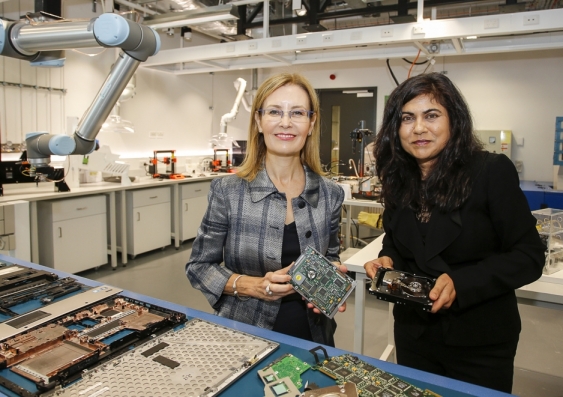
Gabrielle Upton, NSW Minister for the Environment and Professor Veena Sahajwalla at the launch of the world’s first e-waste microfactory. Photo: Quentin Jones.

Community Slams Wollongong Coal Attempt To Dodge Compliance NSW EPA Opposes Mining Company’s Plans To Remove Requirement To Reduce Bellambi Creek Pollution
April 06, 2018: by Lock the GateLock the Gate Alliance and concerned locals have slammed troubled coal mining company Wollongong Coal (WCL) for seeking approval from the Department of Planning to remove a key condition of its mining consent. The company has also ignored an order from the Department from more than a year ago to comply with the clean up condition.
Wollongong Coal’s "preliminary works approval" for its the Russell Vale mine was approved in 2011. The approval requires the company to fix existing poor engineering in Bellambi Creek to stop overflow of stormwater sending coal fines and other mine pollution into the creek. This work has not been done.
The Department of Planning issued the company with a compliance order to adhere to the condition in October 2016, but Wollongong Coal is applying to modify the consent conditions so the work does not have to be done.
In a submission opposing Wollongong Coal’s request, the NSW EPA has criticised the company for poor environmental compliance and highlighted thirteen compliance actions taken against it in the last six years.
The EPA’s submission says, "in recent years WCL has demonstrated they cannot consistently manage and maintain pollution control equipment and plant on site" and that the proposed modification "presents an elevated risk to the downstream community and environment" compared to the existing commitment.
Gavin Workman from Illawarra Residents for Responsible Mining said, “Wollongong Coal has an atrocious history of non-compliance, pollution and accidents. It’s unusual for the EPA to oppose a coal mine project and we’re glad they’ve taken a stand in this case.
“It’s unthinkable that the NSW Department of Planning would let Wollongong Coal get away with not fixing up Bellambi Creek. The pollution they have caused is already unacceptable and the company is only trying to get this change made because it can’t afford to comply.”
Wollongong Coal is currently being prosecuted by two government agencies and is under investigation as to whether it is "fit and proper" to operate in NSW.
Lock the Gate Alliance spokesperson Georgina Woods said, “This is a straightforward case of negligence and non-compliance resulting in recurring pollution of Bellambi Creek by Wollongong Coal.
“Given the tenuous financial position of Wollongong Coal, we have real concerns about the company’s ability to manage and rehabilitate the site. The Government agencies must prioritise cleaning up and securing this site, and ensuring Wollongong Coal and its parent company foot the bill.”
More than 25 objections have been lodged against the modification, which means a final decision will be made by the Independent Planning Commission, once the proposal is assessed by the Department of Planning.
Documents associated with the modification proposal are available here: majorprojects.planning.nsw.gov.au/action=view_jobid=9183
The EPA’s objecting submission is hereBushcare in Pittwater
For further information or to confirm the meeting details for below groups, please contact Council's Bushcare Officer on 9970 1367
BUSHCARE SCHEDULES
Where we work Which day What time
Avalon
Angophora Reserve 3rd Sunday 8:30 - 11:30am
Avalon Dunes 1st Sunday 8:30 - 11:30am
Avalon Golf Course 2nd Wednesday 3 - 5:30pm
Careel Creek 4th Saturday 8:30 - 11:30am
Toongari Reserve 3rd Saturday 9 - 12noon (8 - 11am in summer)
Bangalley Headland 2nd Sunday 9 to 12noon
Bayview
Winnererremy Bay 4th Sunday 9 to 12noon
Bilgola
North Bilgola Beach 3rd Monday 9 - 12noon
Algona Reserve 1st Saturday 9 - 12noon
Plateau Park 1st Friday 8:30 - 11:30am
Church Point
Browns Bay Reserve 1st Tuesday 9 - 12noon
McCarrs Creek Reserve Contact Bushcare Officer To be confirmed
Clareville
Old Wharf Reserve 3rd Saturday 8 - 11am
Elanora
Kundibah Reserve 4th Sunday 8:30 - 11:30am
Mona Vale
Mona Vale Beach Basin 1st Saturday 8 - 11am
Mona Vale Dunes 2nd Saturday+3rd Thursday 8:30 - 11:30am
Newport
Bungan Beach 4th Sunday 9 - 12noon
Crescent Reserve 3rd Sunday 9 - 12noon
North Newport Beach 4th Saturday 8:30 - 11:30am
Porter Reserve 2nd Saturday 8 - 11am
North Narrabeen
Irrawong Reserve 2nd Saturday 2 - 5pm
Palm Beach
North Palm Beach Dunes 3rd Saturday 9 - 12noon
Scotland Island
Catherine Park 2nd Sunday 10 - 12:30pm
Elizabeth Park 1st Saturday 9 - 12noon
Pathilda Reserve 3rd Saturday 9 - 12noon
Warriewood
Warriewood Wetlands 1st Sunday 8:30 - 11:30am
Whale Beach
Norma Park 1st Friday 9 - 12noon
Western Foreshores
Coopers Point, Elvina Bay 2nd Sunday 10 - 1pm
Rocky Point, Elvina Bay 1st Monday 9 - 12noon
Bushcare in Pittwater
Where we work Which day What time
Avalon
Angophora Reserve 3rd Sunday 8:30 - 11:30am
Avalon Dunes 1st Sunday 8:30 - 11:30am
Avalon Golf Course 2nd Wednesday 3 - 5:30pm
Careel Creek 4th Saturday 8:30 - 11:30am
Toongari Reserve 3rd Saturday 9 - 12noon (8 - 11am in summer)
Bangalley Headland 2nd Sunday 9 to 12noon
Bayview
Winnererremy Bay 4th Sunday 9 to 12noon
Bilgola
North Bilgola Beach 3rd Monday 9 - 12noon
Algona Reserve 1st Saturday 9 - 12noon
Plateau Park 1st Friday 8:30 - 11:30am
Church Point
Browns Bay Reserve 1st Tuesday 9 - 12noon
McCarrs Creek Reserve Contact Bushcare Officer To be confirmed
Clareville
Old Wharf Reserve 3rd Saturday 8 - 11am
Elanora
Kundibah Reserve 4th Sunday 8:30 - 11:30am
Mona Vale
Mona Vale Beach Basin 1st Saturday 8 - 11am
Mona Vale Dunes 2nd Saturday+3rd Thursday 8:30 - 11:30am
Newport
Bungan Beach 4th Sunday 9 - 12noon
Crescent Reserve 3rd Sunday 9 - 12noon
North Newport Beach 4th Saturday 8:30 - 11:30am
Porter Reserve 2nd Saturday 8 - 11am
North Narrabeen
Irrawong Reserve 2nd Saturday 2 - 5pm
Palm Beach
North Palm Beach Dunes 3rd Saturday 9 - 12noon
Scotland Island
Catherine Park 2nd Sunday 10 - 12:30pm
Elizabeth Park 1st Saturday 9 - 12noon
Pathilda Reserve 3rd Saturday 9 - 12noon
Warriewood
Warriewood Wetlands 1st Sunday 8:30 - 11:30am
Whale Beach
Norma Park 1st Friday 9 - 12noon
Western Foreshores
Coopers Point, Elvina Bay 2nd Sunday 10 - 1pm
Rocky Point, Elvina Bay 1st Monday 9 - 12noon
Draft Plans Of Management For NSW Reserves, State And National Parks: Have Your Say
The Mother of Ducks Lagoon Nature Reserve Draft Plan of Management is now available for review and comment.Public exhibition of the draft plan provides an important opportunity for members of the community to have a say in the future management of Mother of Ducks Lagoon Nature Reserve.
The draft plan of management is on public exhibition until 18 June 2018 and anyone can review the plan and provide comments.
The Queens Lake Nature Reserve and Queens Lake State Conservation Area Draft Plan of Management is available for public review and comment. The exhibition of the draft plan provides an opportunity for members of the community to have a say in future management directions for the park. Submissions must be received by 9 April 2018.
The Yanga National Park, Yanga State Conservation Area and Yanga Nature Reserve Draft Plan of Management is available for public review and comment. The exhibition of the draft plan provides an important opportunity for members of the community to have a say in future management directions for the park. Submissions must be received by 23 April 2018.
The Toorale National Park and Toorale State Conservation Area Draft Plan of Management is available for public review and comment. The exhibition of the draft plan provides an important opportunity for members of the community to have a say in future management directions for the parks. Submissions must be received by 7 May 2018.
The Bobbiwaa Parks Draft Plan of Management covers Bobbiwaa State Conservation Area, Couradda National Park, Killarney State Conservation Area and Moema National Parkand is now available for public review and comment. The exhibition of the draft plan provides an important opportunity for members of the community to have a say in future management directions for these parks. Submissions must be received by 21 May 2018.
New Inquiry Into Environmental Water
March 1, 2018: House of Representatives Standing Committee on the Environment and EnergyThe House of Representatives Standing Committee on the Environment and Energy has commenced an inquiry into the management and use of Commonwealth environmental water.
The inquiry will examine the role of Commonwealth Environmental Water Holder in determining how environmental water should be used, and also consider how the impact of environmental watering is monitored and evaluated.
The Commonwealth Environmental Water Holder is an independent statutory position established to manage Commonwealth environmental water for the purpose of protecting or restoring environmental assets.Since its establishment, the Commonwealth Environmental Water Holder has become the largest single holder of water entitlements in the Murray-Darling Basin.
The Chair of the Committee, Mr Andrew Broad MP, said the inquiry is an opportunity to understand how environmental water has been managed to date and to identify opportunities to improve the use of environmental water into the future.
“Rivers, floodplains, and wetlands are cornerstones of the Australian environment and support economic activity in regional communities across the country. Environmental water has an important role in ensuring that Australia’s river systems are sustained in the long term,” Mr Broad said.
“In launching this inquiry, the Committee is keen to understand how the Commonwealth Environmental Water Holder makes decisions about when and where to use environmental water, and to examine how the water holder taps into local knowledge and uses the latest science in orderto achieve genuine long-term environmental outcomes,” Mr Broad said.
“The Committee is not inquiring into the broader Murray–Darling Basin Plan, and we are not looking to duplicate the work already underway in this area. Our focus is on Commonwealth environmental water,” Mr Broad said.
The Deputy Chair of the Committee, Mr Pat Conroy MP, explained the Committee would also seek to ensure that environmental water is used efficiently.
“Commonwealth environmental water holdings represent a significant investment by the Australian public in our natural environment. As part of this inquiry, the Committee will examine the integrity of the management of environmental water and seek to ensure that environmental water is usedefficiently and for the purpose for which it was acquired,” Mr Conroy said.
The Committee will accept written submissions, addressing one or more of the terms of reference, until Thursday, 12 April 2018.
Further information about the inquiry, including the terms of reference, is available on the inquiry webpage. Information about how to make a submission to an inquiry can be obtained from the Parliament of Australia webpage.
Management And Use Of Commonwealth Environmental Water
The House of Representatives Standing Committee on the Environment and Energy has resolved to inquire into the 2016-17 annual report of the Department of the Environment and Energy. In doing so, the Committee will inquire into and report on the management and use of Commonwealth environmental water.
The Committee will be conducting public hearings and site inspections to gather evidence from stakeholders.
Submissions are invited until Thursday 12 April 2018.
Inquiry Into The Effectiveness Of The Implementation Of The Basin Plan
7 March 2018: Media Release - The Hon Scott Morrison MP, Treasurer of the Commonwealth of Australia, Joint media release with The Hon David Littleproud MP, Minister for Agriculture and Water Resources
The Coalition Government has announced a Productivity Commission inquiry into the effectiveness and implementation of the Basin Plan and water resource plans.
The Basin Plan supports the integrated management of water resources in the Murray-Darling Basin to optimise social, economic and environmental outcomes.
This inquiry will fulfil the statutory requirement for the first of the Commission’s five-yearly assessments of the effectiveness of the Basin Plan and water resources plans as required by the Water Act 2007.
The Commission is due to report to Government by 31 December 2018.
Public consultation will be undertaken as part of the inquiryand the Government encourages all interested parties to participate. Further information and the terms of reference are available on the Commission's website.
Zest For Life Festival
Hosted by Avalon Community GardenSunday, April 8 at 10 AM - 2 PMIn the Grounds of Barrenjoey High School, via Tasman Road gates, North Avalon.Add some zest to your life at Avalon Community Garden. Hear amazing legends speak about their passion for the planet, for soil, for plastic free living, caring for the Oceans and much more.
Indulge in the Garden’s Natural Food Café, open all day for lunch, organic produce, tea, coffee and cakes. Relax listening to some cool beats from a bevy of Avalon’s talented performers.
For the kids there is craft & painting, music al entertainment, gardening and their own café!
Take a tour through the Garden grounds whilst visiting our eco partners’ stalls. Plus a day of eco workshops, films, talks and fun activities:
10:10 Smoke ceremony and welcome to country Neil Evers - Aboriginal elder of the Guringai people.
11:00 The Importance of Soil talk Peter Rutherford - Eco House and Garden, Kimbriki.
11:30 Making Compost From Food Scraps workshop. Tim Seaton - Coastal Environment Centre / ACG.
12:00 No Plastic Please talk. Robbie Luscombe-Newman – Living Ocean.
12:30 Plastic Free Lifestyle film - Living Ocean.
12:30 Aspara Gus entertains the kids Luke Escombe - The Veggie Plot.
1:00 No more gladwrap on your sangers – make your own beeswax wrap workshop.Tim Seaton – The Coastal Environment Centre / ACG.
1:30 Make your own essential oil sunscreen workshop. Phyllis Agius – ACG.
1:30 Make and retain good soil on steep sites using Hugelkulture method. Sam Gibbons – ACG.


Tool Shines A Light On Solar Potential Of Buildings
April 6, 2018: UNSWA new online tool developed at UNSW will allow property owners to assess the solar power potential of their rooftops.
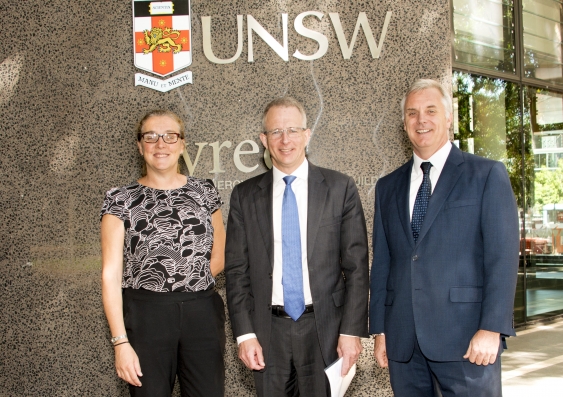
UNSW Associate Professor and Chair of the Australian Photovoltaics Institute, Renate Egan, Federal Minister for Urban Infrastructure and Cities, Paul Fletcher and UNSW’s Dean of Engineering Professor, Mark Hoffman. Photo: Robert Largent
A new online platform that will inform decisions about how home owners and urban planners can make the most of opportunities to use solar power has been launched at UNSW.
The SunSPoT online tool can be used to calculate the solar power potential of any rooftop, to help residents, councils and businesses make better decisions about investment in solar power.
It has been developed by the Australian Photovoltaics Institute (APVI) and UNSW with technology partners Solar Analytics and Enosi Pty Ltd, as part of the Energy Data for Smart Decision Making project, funded by the Australian Government’s Smart Cities and Suburbs program.
The tool was launched by Federal Minister for Urban Infrastructure and Cities, Paul Fletcher, who said: “The Energy Data for Smart Decision Making project will combine mapping with data on solar exposure, energy generation and consumption from precincts across Australia into an open modelling platform.
“Being developed under the Australian Government’s Smart Cities and Suburbs Program, the platform will benefit end users by allowing them to calculate their solar power potential and make informed decisions on investment in solar power generation.”
“This project is an example of how the program encourages collaboration between local governments, research organisations and the private sector to deliver a solution that can be applied locally and shared around the country.”
SunSPoT uses geographical information systems data to estimate the technical potential of rooftop solar, accounting for the tilt of roof surfaces and shading at the site.
UNSW Associate Professor and Chair of the Australian Photovoltaics Institute, Renate Egan, described how the tool will allow residents to assess the solar potential of their own home or business.
She explained, “SunSPoT uses geographical information systems data to estimate the technical potential of rooftop solar, accounting for the tilt of roof surfaces and shading at the site. As solar PV continues to be deployed at record rates on Australian rooftops, such analysis can help councils and the electricity industry plan for the solar future.”
It can already be used online to assess solar potential on specific rooftops in early-adopter local government areas that are already project partners, including Ku-ring-gai, Willoughby, Randwick, Northern Beaches and Lane Cove. More cities and towns will be added as the program expands.
It can also be used to assess the potential across geographical areas. Analyses of Adelaide, Brisbane, Canberra, Melbourne, Perth and Sydney have already discovered enormous untapped potential for solar power installations across a range of buildings.
The SunSPoT tool is available here:

FOI Reveals Shenhua Seeking To Suspend Government’s Power To Cancel Mining Licence Lock The Gate Renews Calls For Liverpool Plains Coal Licence To Be Cancelled
April 02, 2018: by Lock the Gate A document released to Lock the Gate Alliance as part of a protracted freedom of information struggle with the NSW Government has revealed that coal mining company Shenhua applied to suspend a key condition which allows the government to cancel Shenhua’s mining licence.
The condition gives the Government the power to cancel the exploration licence altogether and prevent the company’s Watermark coal mine proceeding.
For more than a year, local farming and community groups and Lock the Gate Alliance have been calling for the government to use the condition to cancel the licence.
Lock the Gate spokesperson Georgina Woods said, “The NSW Government has been playing a double game, claiming it wants to protect the Liverpool Plains from mining while conducting secret negotiations with mining company Shenhua Australia.
"The licence condition Shenhua has applied to suspend for five years is the condition that gives the Government the power to cancel the licence that threatens the Liverpool Plains and end this sorry saga once and for all," she said.
It is not clear whether the Government has agreed to Shenhua’s request to suspend the government’s power to cancel the licence or whether it is under serious consideration.
The document has been released to Lock the Gate Alliance during the course of proceedings in the NSW Civil and Administrative Tribunal following a freedom of information request that was largely rejected by the government.
The Alliance is attempting to bring to light secret negotiations between the Government and Shenhua over the renewal of its coal exploration licence on the Liverpool Plains and decision last year to give the company $262 million.
"The community still doesn’t know what the Government may have promised Shenhua behind closed doors or what deals have been done.
"It was unnecessary and perverse for the Government to give this coal mining company a quarter of a billion dollars of public money when they had the power to cancel Shenhua’s licence all along. They could have halved the size of the licence for free as the Mining Act says should happen on renewal.
"If the Government is serious about protecting the Liverpool Plains from mining and securing the future of its agricultural production, it will cancel Shenhua’s licence and make our state’s productive farmland off-limits to mining altogether."
Fox Baiting Here - Notice To Pet Owners
Northern Beaches Council is advising dog and cat owners to keep their pets away from several major reserves while fox baiting is being carried out.
Poison baits will be laid between 12 March and 1 April 2017 in the following reserves: • Manly Dam, Manly Vale• Red Hill, Beacon Hill• Dee Why Lagoon Wildlife Refuge• Oxford Falls, Morgan Road
These reserves will be closed to dogs and cats until 29 April 2018. Warning signs will also be displayed in the areas to notify the public about the program.
The fox baiting program is being conducted in conjunction with the National Parks and Wildlife Service and involves the use of “Foxoff® Econobait” poison baits, which are designed specifically for fox control. The poison baits contain 1080 (sodium monofluoroacetate).
Update On Baleen 2D HR Seismic Survey
(The survey comprises 46 2D lines of total length 208km.) - NOPSEMA 'Not reasonably satisfied – opportunity to modify EP'Decision date: 03/08/2017 Titleholder action Resubmission due date 3: 02/09/2017Extension of timeframe: 17/08/2017 Titleholder action: 15/10/2017
Extension of timeframe: 05/10/2017 Titleholder action: 31/10/2017
Resubmission of EP: 31/10/2017 NOPSEMA decision: 30/11/2017
Request for further information: 30/11/2017 Titleholder action: 21/12/2017
Acceptance of EP: 10/01/2018 Titleholder action: 20/01/2018Decision notification (PDF 707 KB)
Submission of EP summary 19/01/2018 NOPSEMA decision 29/01/2018
Publication of EP summary 16/02/2018 -(not published/available at this date or yet - 25/2/2018)
Activity started 09/04/2018
Visit:
And NOPSEMA page: Baleen 2D HR Seismic Survey: Asset Energy Pty Ltd - also: Decision notification (PDF 137 KB)
From Decision notification:Basis of decision NOPSEMA has assessed the environment plan in accordance with its assessment policies and procedures.
On completion of assessment, NOPSEMA has decided that it is not reasonably satisfied that the environment plan meets the criteria below as set out in regulation 10A of the Environment Regulations: (a) is appropriate for the nature and scale of the activity (b) demonstrates that the environmental impacts and risks of the activity will be reduced to as low as reasonably practicable (c) demonstrates that the environmental impacts and risks of the activity will be of an acceptable level (d) provides for appropriate environmental performance outcomes, environmental performance standards and measurement criteria (e) includes an appropriate implementation strategy and monitoring, recording and reporting arrangements (g) demonstrates that: (i) the titleholder has carried out the consultations required by Division 2.2A (ii) the measures (if any) that the titleholder has adopted, or proposes to adopt, because of the consultations are appropriate
Titleholder requirements For OMR decision In accordance with regulation 10, the titleholder is required to modify and resubmit the environment plan. Upon resubmission of the plan, NOPSEMA will continue to assess the submission in accordance with its assessment policies and make a decision under regulation 10. After a titleholder has been provided with reasonable opportunity to modify and resubmit an environment plan, NOPSEMA will make a final decision on whether to accept or refuse to accept the environment plan.
National Offshore Petroleum Safety and Environmental Management Authority (NOPSEMA) regulates all offshore areas in Commonwealth waters, which comprise those areas beyond the first three nautical miles of the territorial sea. This includes the Ashmore and Cartier offshore territories and offshore areas adjacent to all states and the Northern Territory.
NOPSEMA also regulates all offshore areas in coastal waters where a state or territory has conferred regulatory powers and functions. In jurisdictions where powers to regulate are not conferred, regulatory responsibilities remain with the relevant state or territory.
Please Help: Contribute To Significant Trees Register For Our Area
Significant trees listings wanted
Avalon Preservation AssociationThe next step in the Avalon Preservation Association's Avalon Cultural Audit is to identify and list significant trees in the area.
Roger Sayers has nominated the Spotted Gums in the reserve opposite Careel Bay Wharf.
Please help us by contributing your pick of significant trees in the area so we can map them and enter into our database.
You can either post a picture/s on the APA Facebook page and identify location of tree/s and species type if known or email us with same at secretary@avalonpreservationassociation.org.au
Our new Avalon Preservation Association Noticeboard is finally installed on corner of Belle Property Building near Herforts Chemist Old Barrenjoey Rd Avalon Beach. Many thanks to Mark Griffin Belle Property for use of wall and Robert Adema for installation.
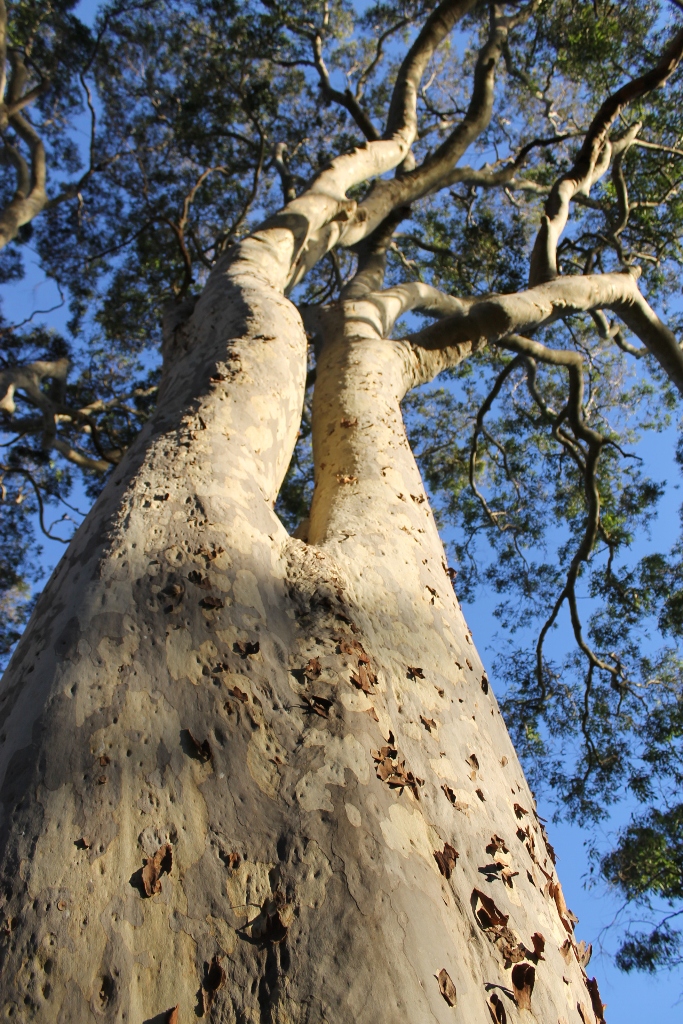

Friends Of Narrabeen Lagoon Catchment Activities
 Bush Regeneration - Narrabeen Lagoon Catchment
Bush Regeneration - Narrabeen Lagoon Catchment
This is a wonderful way to become connected to nature and contribute to the health of the environment. Over the weeks and months you can see positive changes as you give native species a better chance to thrive. Wildlife appreciate the improvement in their habitat.
Belrose area - Thursday mornings Belrose area - Weekend mornings by arrangementContact: Phone or text Conny Harris on 0432 643 295
Wheeler Creek - Wednesday mornings 9-11amContact: Phone or text Judith Bennett on 0402 974 105Or email: Friends of Narrabeen Lagoon Catchment : email@narrabeenlagoon.org.au
Upper Deep Creek Catchment walk
Sat 28/4/18 Start 10am at Terrey Hills and allow 3 hours and bring a screwdriver for some voluntary weeding near the end of the track. See and identify spectacular Sydney sandstone flora in “autumn” blossom. Carpool required. Bookings essential: Conny Harris 0432 643 295
Narrabeen Lagoon Catchment transverse Sat 19/5/18 Start 9am - finish 1.30pm.This walk is a hidden gem. Also lovely scenic views and sometimes rare fauna. Plant ID as we go and a brief lunch break BYO. Carpool back.Bookings essential: Conny Harris 0432 643 295
Cromer to Oxford Falls
Sun 10/6/18 Start 10am from Cromer Rd, allow 4 hrs and bring lunch to see great carvings near Red Hill, fantastic views over Narrabeen Lagoon and as typical for this catchment very different vegetation communities. Plant ID as we go. We will walk down to Oxford Falls and carpool back. Bookings needed: Conny Harris 0432 643 295
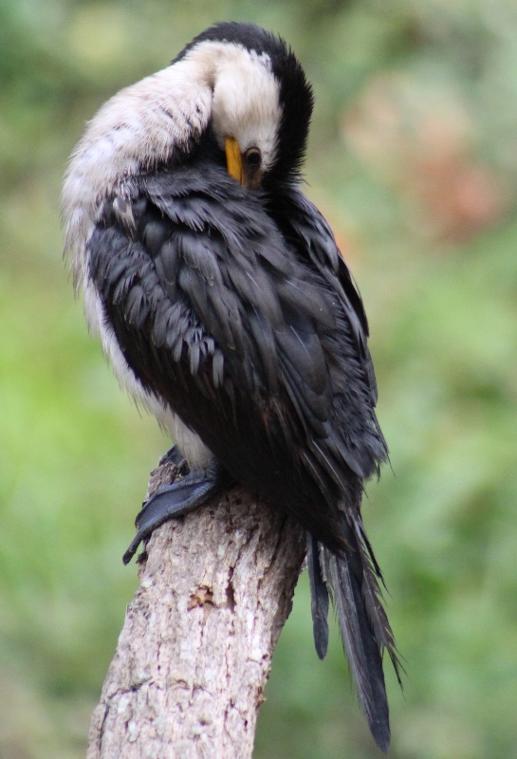


Increased Payments Lock In Record Commonwealth Funding For Hospitals
- Queensland hospitals by $309.2 million to $3.71 billion in 2015-16
- Western Australia hospitals by $97.8 million to $1.95 billion in 2015-16
- Victorian hospitals by $89.8 million to $4.24 billion in 2015-16
- South Australian hospitals by $36.4 million to $1.24 billion in 2015-16
- Northern Territory hospitals by $15.2 million to $204 million in 2015-16
- Australian Capital Territory hospitals by $13.6 million to $341 million in 2015-16
- Tasmanian hospitals by $4.5 million to $366 million in 2015-16.
Scientists Discover Hybrid Swarm In Global Mega-Pest
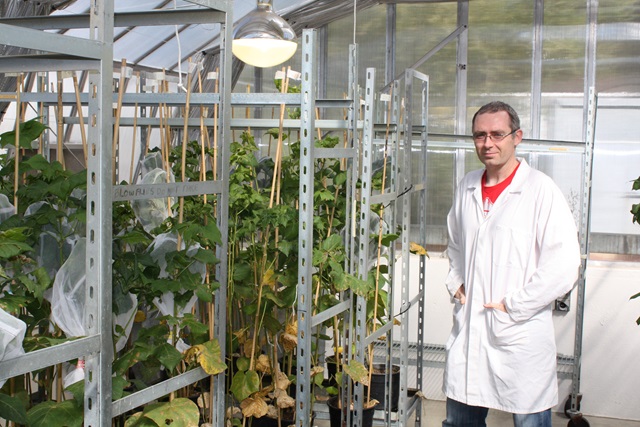
Millions Of Aussies Benefit From Medicine Price Drop
Inner Ear Provides Clues To Human Dispersal
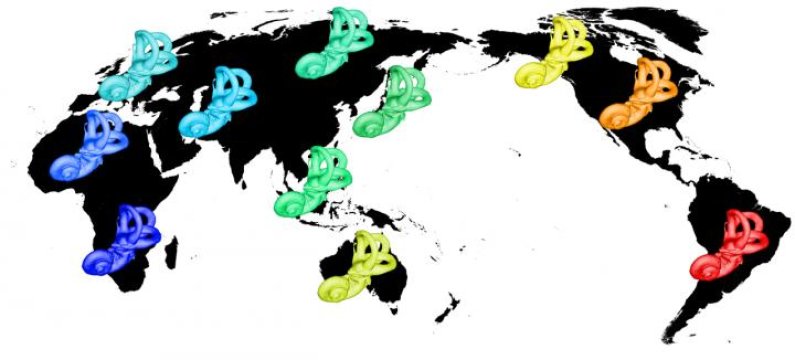
Up To $26 Million For Advocacy Groups: NDIS
Extinct Monitor Lizard Had Four Eyes
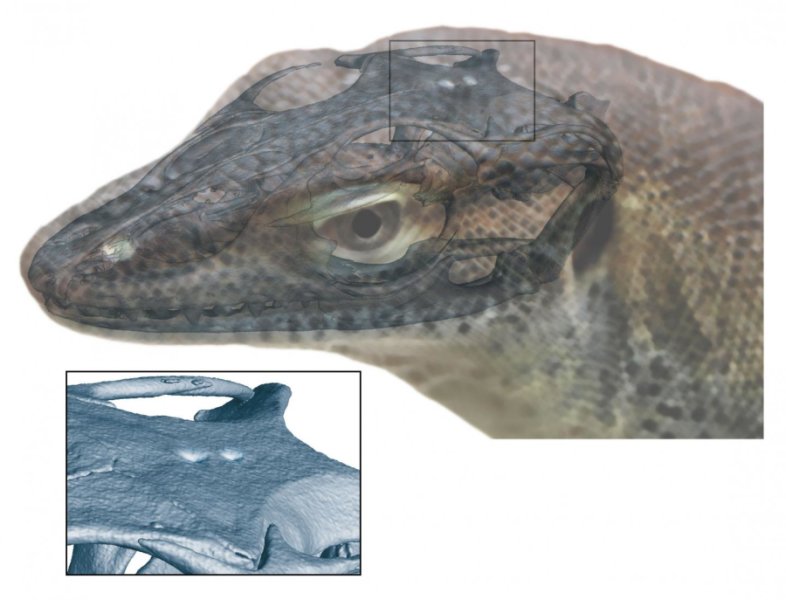
Thanks NSW - That's A Wrap
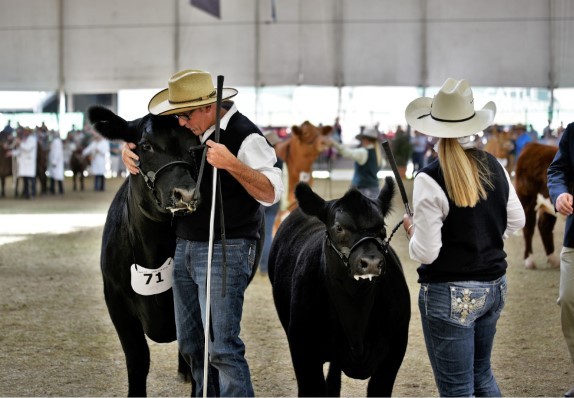
River's Evolution Unfolds With Fresh Mix Of Dating Techniques
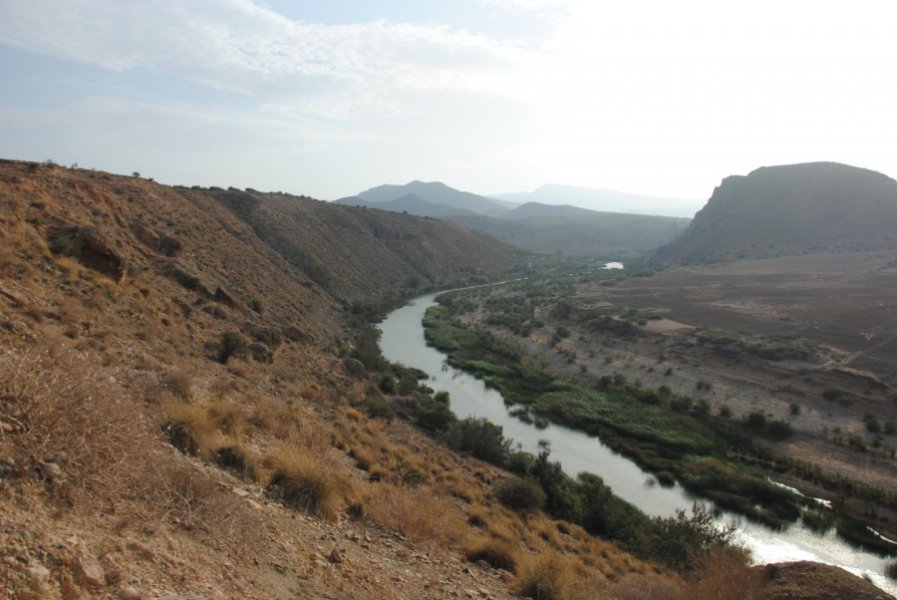
Disclaimer: These articles are not intended to provide medical advice, diagnosis or treatment. Views expressed here do not necessarily reflect those of Pittwater Online News or its staff.